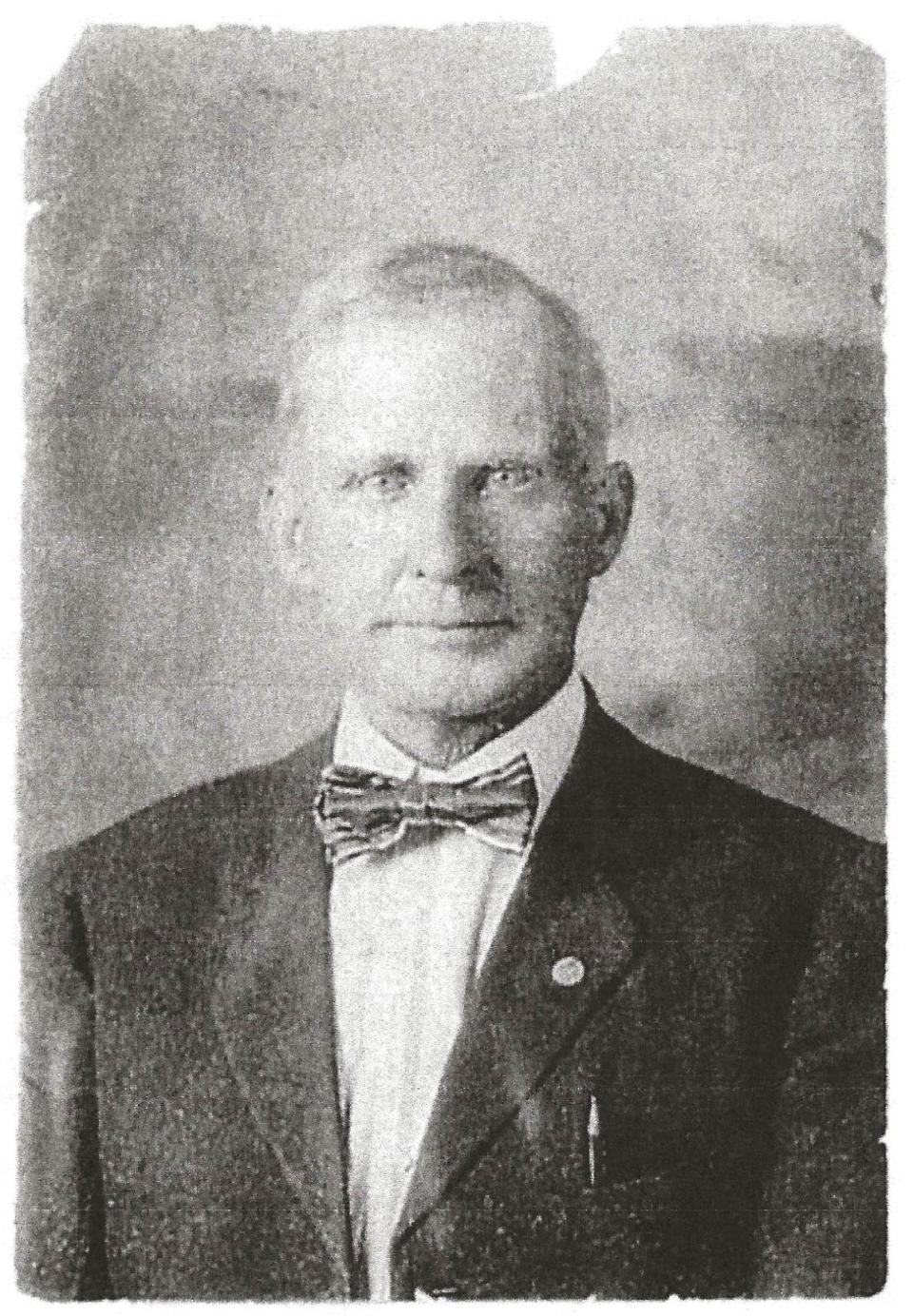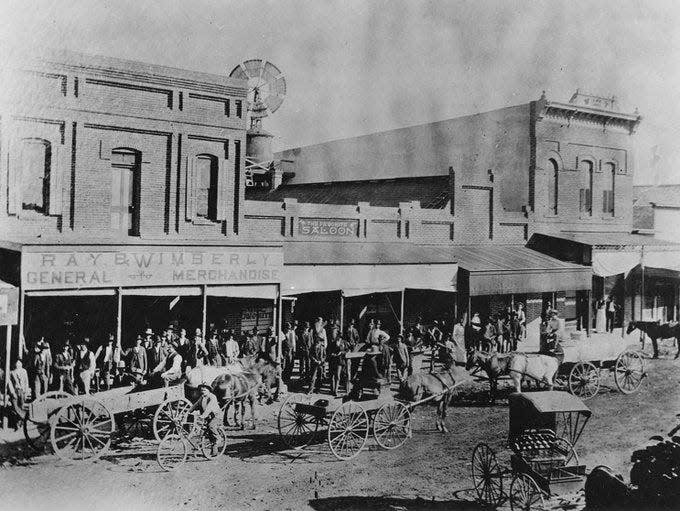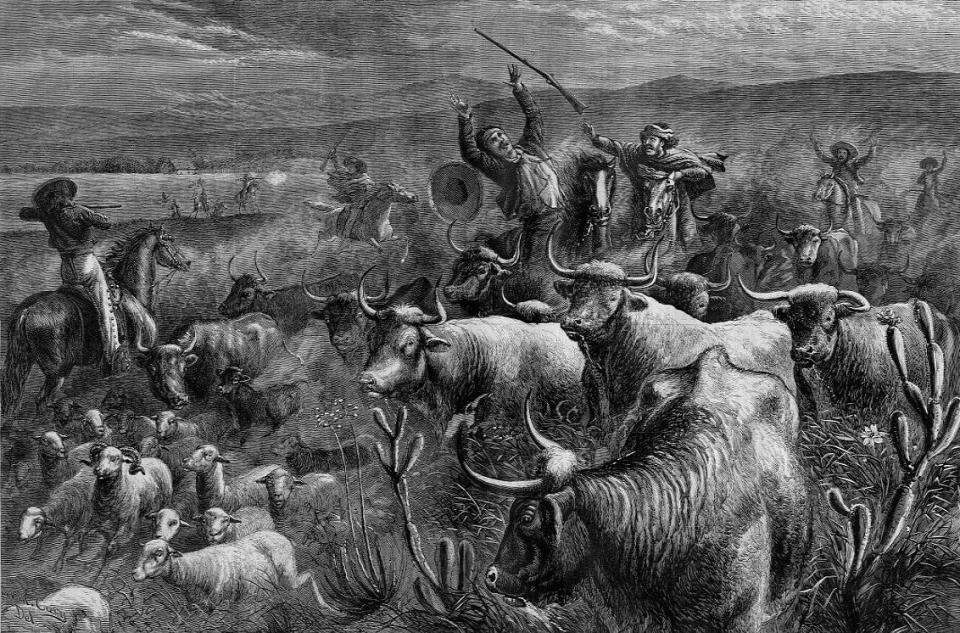Caprock Chronicles: Murders at the Gaines Hotel: Fearless Dave Allison, part one
Editor's Note: Caprock Chronicles is edited by Texas Tech University Librarian Emeritus, Jack Becker. He can be reached at jack.becker@ttu.edu. Today’s article about the murders of two cattle inspectors is the first of a three-part series by frequent contributor Chuck Lanehart, Lubbock attorney and award-winning Western history writer.
The 1923 murders of two prominent Texas lawmen at the Gaines Hotel in Seminole, followed by the killers’ trials in Lubbock and Abilene, are said to have ended the frontier era of Texas history. According to a young George S. Patton, one victim of the shootings was “the most noted gunman here in Texas.” He was Dave Allison.

The story begins in Ohio in 1861, with the birth of William Davis “Dave” Allison. His father, a physician, soon moved the growing family to Houston, then to McKinney, and then to Brownwood, where Dave spent his boyhood years becoming quite familiar with firearms and livestock. With little formal education, 21-year-old Dave arrived in Midland and worked as a cowboy. Even before the oil boom, Midland was known as the “richest little town in Texas” because of the thriving West Texas cattle industry.
In contemporary newspaper accounts, the young man was often described as “fearless,” and his reputation earned him election as Midland County’s second sheriff in 1888. At age 26, Dave was the youngest sheriff in Texas. The next year, he married pretty 18-year-old Lena Lee Johnston, and with extra income from his cattle business and as Midland County Tax Assessor, the couple prospered.
Midland County re-elected Sheriff Dave six times. County records show he was busy making arrests “for keeping and exhibiting a gaming table and bank, unlawfully carrying a pistol, aggravated assault, murder, passing as true a forged instrument, disturbing public worship” and many arrests for stealing cattle and horses.
Meanwhile, he was appointed Special Texas Ranger by the governor, a post he held simultaneously as sheriff. His reputation as a lawman grew. The New Mexico Territory Knolls News described him as “one of the very best peace officers the Southwest ever produced.”

The St. Louis Post-Dispatch reported, "Dave Allison . . . a man of much experience and gun fights, though according to repute, he was inclined to peace. As sheriff and ranger, he . . . found it necessary to engage in many hand-to-hand combats. It is of record that during his 12 years as sheriff of Midland County, he never went after a man he did not get, though as a rule, he took his prisoners alive. Men sought by Sheriff Allison knew his reputation for coolness in emergencies, and he was not an officer to be resisted by men who care to keep their hides."
But he was not without fault. As he held office, Sheriff Dave himself was arrested. The 1893 complaint alleged “with forces in arms,” he and J.H. Brown “did then and there unlawfully fight together in a public place.” No resolution of the case is known, but the combatants probably paid nominal fines.
Perhaps Dave’s greatest vice was gambling, which got him in hot water more than once and led to his downfall as Midland County Sheriff. During his last term in office, he was arrested and paid a fine for “Gaming.” And while Dave was suspected of embezzling $10,000 in public funds to pay gambling debts, he was never charged. In 1898, he resigned as Sheriff and relinquished his local law enforcement commission.

In the years to follow, Dave served in many law enforcement capacities, including Texas Ranger, “Special” Texas Ranger for the Texas and Southwestern Cattle Raisers Association, United States Marshal, Roswell New Mexico Chief of Police and Arizona Ranger. The Arizona Ranger job ended in a familiar way. His captain said, “I had let him go because he was always getting up to his neck in debt, trying to break every faro bank and Monte game . . .”
During his Roswell career, Dave was accused of offering and accepting a $500 bribe to suppress evidence of interest to the grand jury in a sheep- poisoning case. He was tried and acquitted by a Chaves County petit jury.
Despite such challenges, Dave was known as a fearless lawman, level-headed and deadly with a firearm, but also modest and self-deprecating. Among his adventures, he reportedly killed Three-Finger Jack in a chase following a train robbery in Fairbank, Arizona. He was also credited with capturing the outlaw Owens brothers and Tom “Bravo Juan” Bowes. He was a bodyguard for a mining magnate during the deadly 1906 mine strikes at Cananea, Mexico. He led the posse that caught and killed Mexican revolutionary-turned-outlaw Pasqual Orozco in 1915. While patrolling the US-Mexico border, Dave made the acquaintance of a young Army lieutenant stationed nearby, George Patton, who wrote in a letter to his wife: “Dave Allison kills several Mexicans a month.”
Dave’s last job was as a field inspector for the Texas and Southwestern Cattle Raiser’s Association. His aggressive investigations of suspected cattle rustlers Hill Loftis—also known as Tom Ross—and Milton Good led to a tragic end.
The book, “Fearless Dave Allison” by Bob Alexander, was a source for this article. In next week’s Caprock Chronicles, the story of Dave’s investigations of Tom Ross and Milton Good will be examined.
This article originally appeared on Lubbock Avalanche-Journal: Caprock Chronicles: Murders at the Gaines Hotel: Fearless Dave Allison, part one

